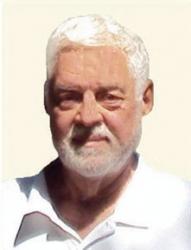My wife, Cathy, and I recently attended the annual Mad Hot Ballroom competition as guests of our long-time friends Karen and Darrel Drewett. Cathy was a judge for the first competition in 2010 and we were surprised at how much it had grown: there were a thousand people in the event center at L’Auberge for a formal dinner. The show was a first-rate production with many local sponsors.
The event is a fundraiser for Whistle Stop, which is a facility run under the Post-Separation Family Violence Act where children can meet with their parents under court-ordered supervision when there is possible risk to the children due to domestic violence, child abuse, neglect, or contentious custody battles. In 2010, Whistle Stop partnered with DanceSport to create a program to teach ballroom dancing to children as a means of helping them develop their social and emotional skills.
The Mad Hot Ballroom Gala consists of ten local “celebrities” who developed a dance routine with the assistance of a dance coach/partner. Only the celebrity is judged on their dance mastery. Cathy and I were rooting for one of our favorite couples, Dr. Lee J. Monlezun and his wife Anne. Lee J. and I share a common bond in that we are both men of science married to dancers. (Cathy has a studio in Moss Bluff, and Anne operated a studio in Lake Charles for years.)
Dancers and choreographers tend to see the world differently than persons of science and technology see it. They tend to be creative and innovative, and focused on beauty, grace, and emotion.
Lee J. and Anne won the award for the most creative routine that evening, but I doubt a physician’s patients would be impressed if he won an award for the most innovative and creative appendectomy. Nor do people give out awards for the most graceful and elegant economic forecast.
When people are searching for a mate, many set out to find someone just like themselves: someone who likes the same food and the same music, roots for the same sports team, and shares their religious and political belief. But when one combines similar things, there is no synergy that makes the whole greater than the sum of the parts. For example, if you are scrambling an egg for breakfast and you add a second egg, you get a larger serving of scrambled eggs. But if you take the first egg, stir it up, then add some cheese, a few peppers, and a bit of ham … you get a tasty omelet. Lee J. and I are both very happy with our “omelet marriages.” But one must be careful when mixing different things: if you mix potassium and water, you will get an explosion that could burn down your house.
Back to Whistle Stop and the Mad Hot Ballroom … Dorothy McDaniel, the president of Whistle Stop, Nancy Vallee, the founding executive director, and Amanda Yellott, the DanceSport director, deserve recognition for having built up this program in just 12 years. Other social and cultural organizations should take heart.
The pandemic with its lockdowns and social distancing, and the destruction wrought by hurricanes Laura and Delta have taken a huge toll on the cultural life of Southwest Louisiana. The Civic Center and Rosa Heart Theater are still being repaired, leaving the Lake Charles Symphony searching for venues for its performances. Several dance studios in the area have closed because they were unable to hold their dance recitals and other programs. (Cathy usually had two recital shows in the Rosa Hart Theater, but for the past two years she has had to have several shows as well as live-streaming dance from South Beauregard High School.)
The Little Theater lost its building in Hurricane Laura and is still without a venue, while ACTS Theatre was able to finish repairs and reopened last October with its production of 42nd Street. McNeese State was able to restart its Banners series of cultural events, although it had to do so at various locations until Bulber Auditorium was repaired this spring.
Culture is important because it defines who we are as a society. One’s DNA may explain their physical characteristics: their height, the color of the hair and skin, the shape of their nose, and even some medical propensities. But who we are as individuals — the food we eat, the clothes we wear, the music we enjoy, how we value things, how we treat others, is shaped by the culture in which we are raised and in which we live. Culture is grounded in the past, and in isolated communities it may change little over time. But as the world grows smaller due to technology and mobility, we are increasingly seeing cultural blending, especially among younger people. (The old folk are pretty much set in their ways).
The arts (writing, acting, painting, music, song, dance, and fashion) are reflections of our culture. The American culture I grew up in during the ‘50s and ‘60s, and to which I still cling, was vastly different from the American culture of today. Cathy and I recently went to see Elvis starring Tom Hanks, who gives an incredible performance as Colonel Tom Parker. But the film itself is all about cultural change. The same was true of West Side Story, which was recently in theaters.
Louisiana has perhaps the most distinctive culture of all the 50 states. That culture is who are and it is reflected in our arts. To support the arts is to reinforce our culture and our identity as a society.














Comments are closed.